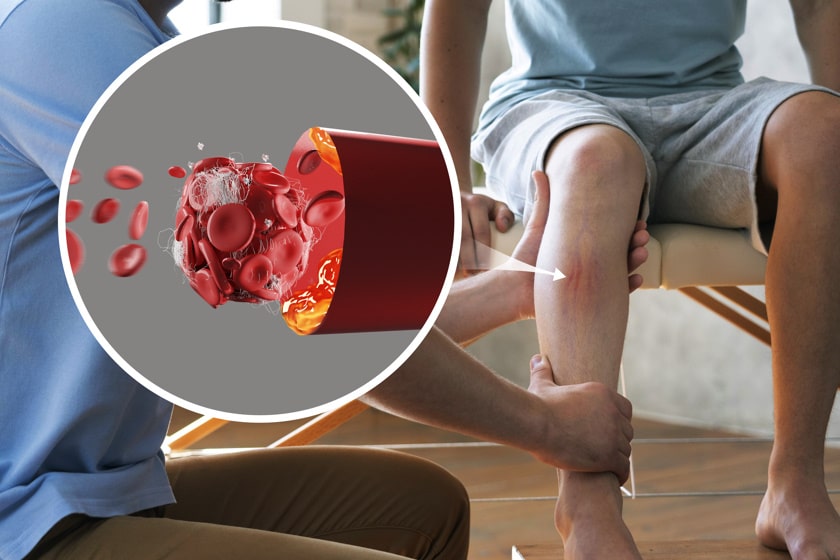
Understanding Peripheral Arterial Disease
In today’s fast-paced world, vascular health often takes a backseat until it manifests as a critical concern. One such condition that frequently goes unnoticed is Peripheral Arterial Disease (PAD), a common circulatory problem affecting millions. In India, where health awareness is burgeoning, understanding the nuances of such conditions becomes paramount. Dr. Sumit Kapadia, a distinguished name in the realm of vascular health, brings to light the intricacies of PAD.
Peripheral Arterial Disease, often abbreviated as PAD, is a condition marked by the narrowing of arteries in the legs due to plaque buildup. This phenomenon hampers the smooth flow of blood, leading to a spectrum of symptoms that are often misattributed to aging or overexertion. Unfortunately, the lack of awareness about PAD, its symptoms, and the available peripheral artery disease treatment options has led to many cases going undiagnosed or being diagnosed late, which can have severe consequences.
Recognizing PAD early and understanding the pad treatment options are crucial steps in managing this disease. With advancements in medical science, new treatments for pad 2023 have emerged, offering hope and improved outcomes for patients. Dr. Sumit Kapadia, with his extensive experience in treating vascular disease in the legs, including peripheral artery disease angioplasty, plays a pivotal role in educating and treating patients.
This blog aims to shed light on the lesser-known signs and symptoms of PAD, providing the general masses with information that can lead to early detection and effective management of the disease. Awareness is the first step toward prevention, and with this blog, we hope to contribute to a healthier, well-informed society.
What is Peripheral Arterial Disease (PAD)?
PAD is a common, yet often overlooked, circulatory problem where narrowed arteries reduce the flow of blood to your limbs. This primarily happens due to the buildup of fatty deposits in the arteries (atherosclerosis) and can lead to severe leg pain, and even worse, can be a precursor to heart attacks or strokes. Understanding PAD is the first step in combating its silent progression.
Common Symptoms of Peripheral Arterial Disease (PAD)
Typically, PAD manifests as leg pain when walking or climbing stairs – a condition known as claudication. This pain can range from mild discomfort to debilitating pain. Other common symptoms include:
- Leg numbness or weakness.
- Coldness in the lower leg or foot, especially when compared with the other side.
- Sores on toes, feet, or legs that won’t heal.
- A change in the color of the legs.
- Shiny skin on the legs.
- Slow hair growth or hair loss on the feet and legs.
Lesser-Known Signs of PAD
While some symptoms of PAD like leg pain during exercise are widely known, several lesser-known signs of peripheral arterial disease (PAD) often go unnoticed. Recognizing these subtle symptoms is crucial for early diagnosis and effective treatment of this vascular disease in the legs.
Temperature Changes in the Legs or Feet: One of the more subtle signs of PAD is a noticeable difference in temperature between one leg and the other. If one leg consistently feels colder, it could indicate poor blood circulation due to PAD.
Changes in Skin Color: PAD can cause the skin on the legs or feet to change colour. Look for skin that appears shiny or turns pale or bluish. These changes are often mistaken for signs of ageing but can indicate a serious underlying vascular condition.
Slower Growth of Toenails and Leg Hair: Reduced blood flow can affect the growth rate of hair and nails on the legs and feet. If you notice that your leg hair or toenails are growing slower than usual, it could be a sign of PAD.
Erectile Dysfunction: Particularly in men with diabetes, erectile dysfunction can be an early sign of PAD. Reduced blood flow, a common feature of PAD, may manifest first in the more sensitive areas of the body like the genitals.
Non-healing Wounds or Ulcers on Feet and Legs: Wounds or ulcers on the feet and legs that are slow to heal, or don’t heal at all, can be a sign of PAD. This is due to the reduced blood flow which impairs the body’s healing process.
Leg Weakness or Numbness: Sometimes, PAD can cause a feeling of weakness or numbness in the legs. This might be especially noticeable when climbing stairs or during other physical activities.
Nighttime Leg Pain: People with PAD might experience cramps or pains in their legs or feet at night, which could disturb their sleep. This pain might also occur when lying flat and may be relieved by hanging the legs off the bed or getting up to walk.
In 2023, with new treatments for PAD emerging, recognizing these lesser-known symptoms is more important than ever. Dr. Sumit Kapadia emphasizes the significance of paying attention to these subtle signs for early PAD detection and intervention. Understanding and identifying these symptoms can lead to timely consultation with specialists like Dr. Kapadia, who can offer a range of treatments including peripheral artery disease angioplasty, significantly improving patient outcomes.
Risk factors for PAD are conditions or habits that increase your chance of developing the disease. These include:
Smoking: The most significant risk factor for PAD. Smoking can constrict arteries, reduce blood flow, and accelerate artery damage.
Diabetes: High blood sugar levels can damage blood vessels and nerves, leading to reduced blood flow.
High blood pressure: Can cause hardening and narrowing of arteries.
High cholesterol: Contributes to the buildup of plaque in the arteries.
Obesity: Increases the risk of diabetes, high blood pressure, and vascular diseases.
Age: Risk increases with age, especially over 50 years.
Family history of PAD, heart disease, or stroke.
Understanding these risk factors is crucial in preventing or delaying the onset of PAD.
Diagnosing PAD: Tests and Procedures
Early and accurate diagnosis of Peripheral Arterial Disease (PAD) is crucial for effective treatment. Dr Sumit Kapadia and his team use a variety of tests and procedures to diagnose PAD accurately, ensuring that patients receive the most appropriate care tailored to their condition.
Ankle-Brachial Index (ABI): This is the first and most commonly used test for PAD. It compares the blood pressure in your ankle with that in your arm. An ABI ratio lower than 1.0 indicates reduced blood flow, suggesting PAD.
Doppler and Ultrasound Imaging: This non-invasive method uses sound waves to produce images of the internal structures of the body. It helps visualize blood flow in the arteries and can identify blockages or narrowed areas.
Computed Tomographic Angiography (CTA) and Magnetic Resonance Angiography (MRA): These imaging tests provide detailed pictures of the arteries and are useful in cases where more information is needed beyond what ultrasound can provide.
Angiography: Often considered the gold standard for diagnosing PAD, angiography involves inserting a catheter into the artery and injecting a contrast dye. X-rays are then taken to visualize the flow of blood through the arteries and pinpoint any blockages.
Blood Tests: Blood tests may be done to measure cholesterol levels, triglycerides, and glucose, as these can be indicators of risk factors for PAD.
Each of these diagnostic tools offers a different view and understanding of the health of the arteries. In Aadicura Superspeciality Hospital’s Vascular Department,, the choice of test depends on the patient’s specific symptoms, risk factors, and overall health. For instance, patients with kidney problems might avoid certain tests like angiography that require contrast dyes.
Understanding these diagnostic procedures can help patients prepare for what to expect during their evaluation for PAD. Dr. Kapadia and his team are committed to using these diagnostic tools effectively, ensuring that each patient’s treatment plan is as accurate and beneficial as possible.
Treatment Options for PAD
Dr. Sumit Kapadia tailors PAD treatment based on individual needs. The treatment spectrum includes:
Lifestyle Changes: The cornerstone of PAD management. Quitting smoking, regular exercise, and a healthy diet can significantly improve symptoms.
Medications: To improve blood flow, lower cholesterol, and reduce blood pressure.
Angioplasty and Stenting: In this procedure, a small balloon is inflated inside the artery to open the blockage, and a stent may be placed to keep the artery open.
Bypass Surgery: Rerouting blood flow around the blocked artery.
Thrombolytic Therapy: Uses medication to dissolve blood clots in the arteries.
Each treatment option has its indications and benefits, which Dr. Kapadia will discuss in detail with each patient.
Lifestyle Changes to Manage PAD
Lifestyle modifications play a crucial role in managing PAD:
Exercise: Regular exercise, especially walking, can significantly improve walking distance and reduce symptoms.
Diet: A heart-healthy diet can help lower blood cholesterol and reduce PAD progression.
Smoking Cessation: Quitting smoking is crucial for PAD treatment and overall vascular health.
Importance of Early Detection and Prevention
Early detection of PAD can prevent its progression and reduce the risk of heart attack and stroke. Regular check-ups and being aware of the symptoms are essential, especially for those with risk factors.
Resources and Support for Individuals with PAD
Living with PAD requires ongoing care and support. Dr. Sumit Kapadia’s clinic offers comprehensive care, and there are various resources like patient education programs, lifestyle modification guidance, and support groups available for additional support.
Conclusion
Recognizing both the common and lesser-known signs of PAD can lead to early diagnosis and more effective treatment. With the expertise of Dr. Sumit Kapadia and the availability of advanced treatment options, managing PAD effectively is more achievable than ever. If you or a loved one is experiencing any symptoms or signs of PAD, early consultation and intervention can make a significant difference.
Explore More on Dr Sumit Kapadia’s YouTube Channel
For those who wish to dive deeper into the world of vascular health and understand the complexities of conditions like Peripheral Arterial Disease, Dr Sumit Kapadia’s YouTube channel is an invaluable resource. Here, you can find a wealth of information through various informative videos, patient testimonials, and detailed explanations of vascular conditions and treatments.
We encourage you to visit the channel and subscribe for regular updates and informative content that can help demystify vascular health issues and empower you with knowledge directly from a leading expert in the field.

MBBS, MS, MRCS, DNB-Fellow
Dr. Sumit Kapadia
Dr. Sumit Kapadia / MR KAPADIA SUMIT a gold-medalist from Baroda Medical College, obtained his general surgical training and senior residency from SSG Hospital, Vadodara.

MBBS, MS, MRCS, DNB-Fellow
Dr. Sumit Kapadia
Dr. Sumit Kapadia / MR KAPADIA SUMIT a gold-medalist from Baroda Medical College, obtained his general surgical training and senior residency from SSG Hospital, Vadodara.



